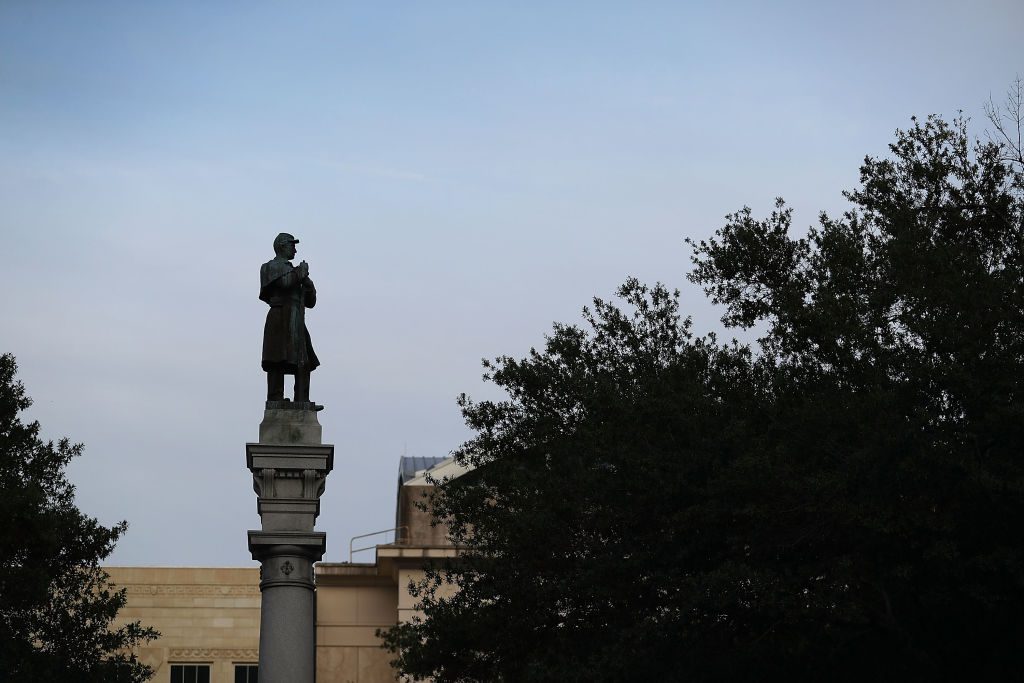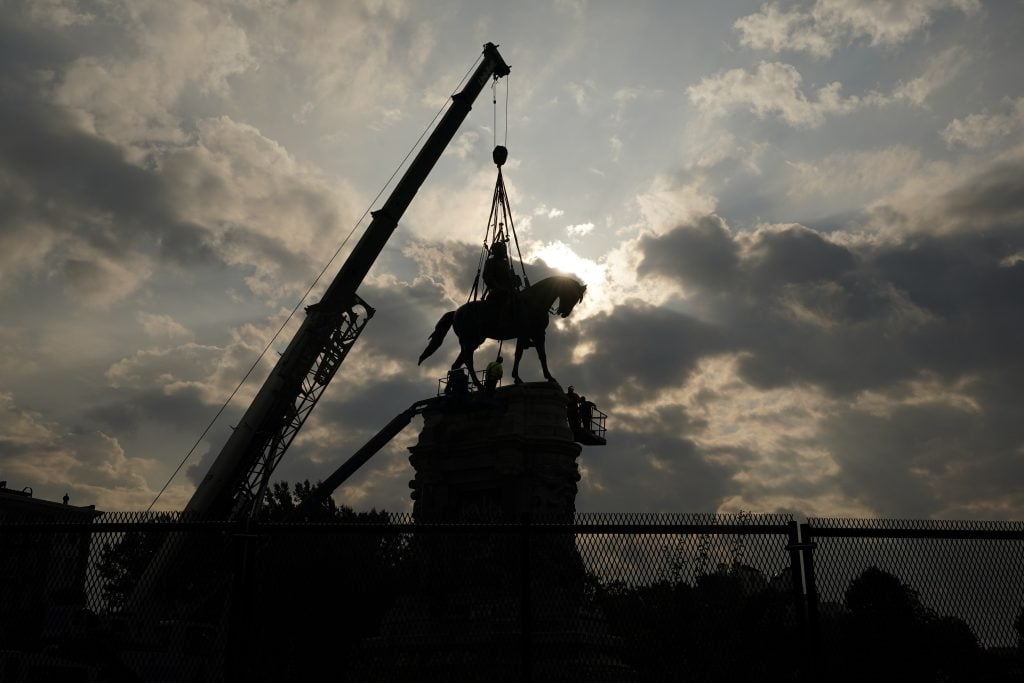The monument landscape in the U.S. saw headline-grabbing changes in 2020 as controversial statues across the country were toppled via both protest and legislation. Beyond those headlines, however, is a sobering reality: 99.4 percent of monuments were entirely unaffected.
That point looms over a new, expansive audit of the country’s memorials, markers, and statuary conducted by Monument Lab, a Philadelphia-based public art studio and nonprofit. The monument landscape, the report found, is far larger and more elusive than we may realize, and the process of rewriting history is, necessarily, a slow, iterative one.
According to the report’s list of the most commonly memorialized figures, 42 of the top 50 are white males, 25 owned slaves, and 20 were born into wealth. Only one woman (Joan of Arc) and one person of color (Martin Luther King, Jr.) crack the top 20. The first American woman, Harriet Tubman, comes in at number 24.
The top three are, in order: Abraham Lincoln, George Washington, and Christopher Columbus (yes, even accounting for the statues of Columbus that have been taken down).

A monument featuring a statue of a Confederate soldier in Jacksonville, Florida. Photo: Joe Raedle/Getty Images.
Conclusions go beyond individuals as well. A staggering one-third of all recorded monuments have to do with war, for instance. And they often represent distortions of the truth: only one percent of 5,917 Civil War monuments mention “slavery,” and just three percent of 1,690 Confederate monuments mention “defeat.”
Monument Lab’s report is the product of years of work largely funded by a $4 million grant from the Mellon Foundation’s $250 million “Monuments Project,” an ambitious initiative to overhaul historical monuments in the U.S. Before that overhaul could begin, Mellon needed to know as much as possible about the landscape it was setting out to change.
The information is more difficult to capture than one might think, the non-profit’s co-director, Paul Farber, pointed out in an interview with Artnet News. “There is a common misperception that there is some central government body or agency that has a list of all the monuments,” he said. “That is the opposite of the case. Despite the fact that monuments occupy a central part of cultural consciousness, they remain elusive to track.”
The audit compiled all the existing forms of monument documentation across public, federal, state, tribal, and institutional sources. (That accounts for 48,178 records in all, and they’re now all free to explore on Monument Lab’s website.) It’s not a point-by-point picture but rather a holistic portrait of how these symbols of time and power have operated within the structures that constitute our culture—which is just as telling.
Indeed, if you’re looking for confirmation of the biases built into the American narrative, it’s not hard to find. But the report also reminds us of something we tend to forget: monuments may be made of marble and steel, but permanent they are not. In fact, Farber noted, they “have always changed. It’s built into the form.”
If these objects outlive us, they won’t do so on their own. They require maintenance, money, and effort to keep them up. In other words, behind every long-lasting symbol of the past is a system of power in the present. (Though the money is notoriously tricky to follow, Farber noted, as monuments are often funded through donations, public-private partnerships, and other willfully complicated ways.)
“Permanence is an illusion,” he continued, “it’s a way to put off responsibility. We can build monuments to be places [that represent] not an end point of history, but the bridge between the past, present, and then the future.”










